How To: 2 UNSTOPPABLE Ways To Get Open For More Shots
If your players can create space from the defense and get open, it gives your team many more scoring opportunities.
Your players either get an open shot immediately off the catch.
If the initial shot is defended, your players have an advantage off the dribble because the defense will be in recovery mode.
If your players can't get open, your team's ability to shoot doesn't matter... neither does your offensive execution if you can't pass the ball. So this is a vital component to your team's success.
In this video, Don Kelbick demonstrates how to get open and two different cuts that you can utilize.
How To Get Open Every Time
As Don Kelbick says in the video...
"Defense is about dictation. Offense is about control.
Once you can control him, you can attack him.
Where do you go if you want to control the defense?"
Step 1 - Go to the basket.
The defender has to get closer to you. If they don't, you get a lay up.
Step 2 - Step through.
You step towards the basket with your top foot, then you step through with your bottom foot.
Step 3 - Inside hip, inside shoulder.
You get your inside hip and your inside shoulder inside of the defense to get them on your backside.
Step 4 - Execute cut
2 Different Cuts To Get Open
As shown in the video, you can execute a V-cut or an L-cut.
V-Cut
With this cut, your path looks like the letter V. 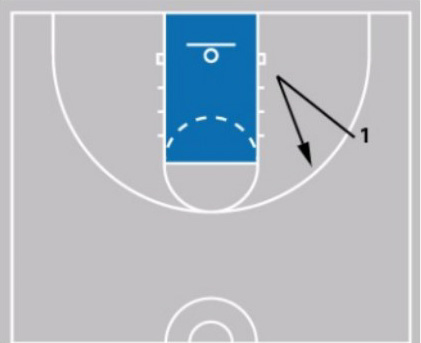
-
1. As shown in the video, you repeat the steps of taking your defender to the basket and getting them on your back (step through - inside hip, inside shoulder).
2. Once you gain position, you drive off your inside leg and step with your outside leg to cut to the wing.
3. You extend your outside hand extended for a passing target.
4. You pivot and look to score.
L-Cut
The path of the L-cut takes the form of the letter L. 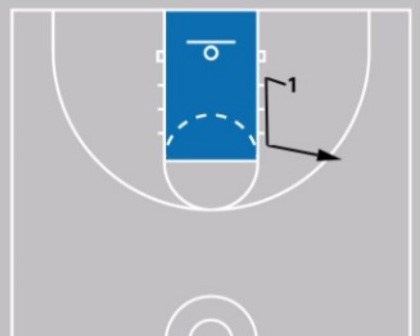
-
1. With the L-cut, you repeat the steps of taking your defender to the basket and getting them on your back (step through - inside hip, inside shoulder).
2. You cut up the lane line.
3. Then you stop and hold. You can vary the stop anywhere on the lane line from the low post to the high post.
This makes it very difficult for the defender to time your cut. You control when the cut is going to happen and the defender has to react to you. Thus, you have the advantage.
4. Next, you cut out and slightly up to the wing area.
You cut slightly up because it creates a better passing angle and makes it more difficult for the defender to deflect the pass.
5. As you cut, you provide a passing target with your outside hand and outside foot for a target.
6. You execute an inside pivot (reverse or back pivot) and look to score.
If the defender overplays either cut, you can always cut backdoor and clear out.
3 Drill Progressions To Practice Getting Open
Here are three drill progressions that you can use to improve getting open and scoring from this position.
Drill #1 - No Defense
You can use the drill in the video to improve the footwork and shooting from this situation.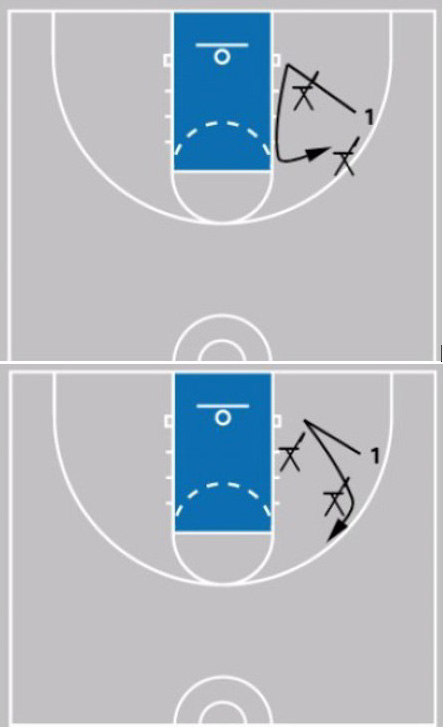
-
1. Player cuts to the first chair. Player executes step through and imagines getting the defender on the inside hip and inside shoulder.
2. Next, the player cuts to the second chair, turns, and shoots. You can designate which cut to practice.
Drill Variations For Shooting:
- Shooting off the catch
- 1 dribble jump shots
- 2 dribble jump shots
- Lay ups
- Different finishing moves, etc.
When To Use Chairs Or Passers In The Drill:
You can use chairs or a passer if they are capable of making good passes.
Personally, I prefer to use chairs when first teaching the skill. As Don says, I don't like bad passers to screw up the skill development practice, especially at the initial learning phase.
When players get accustomed to the footwork, I introduce passing.
You can also do a hybrid. You can do some repetitions with the chair, then some repetitions with a passer. With younger players, this could be very useful.
However, if you're in a small group of 2 or 3 players, you could pass from the beginning.
Drill #2 - 1v1 Wing
Next, you can incorporate some decision-making. 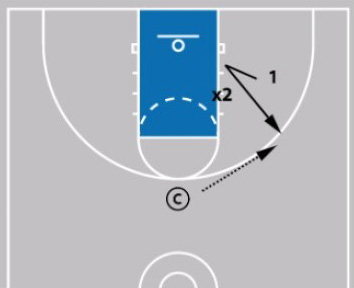
-
1. This drill starts with the offensive player & defender on the wing. From there, the offensive player tries to get open. Play is live immediately.
2. When the offense catches the ball, the offense tries to score. The defense tries to stop the offense.
Drill Variations:
- Shot clocks / Dribble limits
To enforce specific habits, you can also use shot clocks (3 to 5 seconds) or dribble limitations (2 to 3 dribbles).
You can use shot clocks, so players don't develop habits of doing extra, unnecessary jab steps. From a 1v1 perspective, we emphasize shoot or attack. From a team perspective, we emphasize immediately score or pass.
Dribble limits teach your players to be efficient with the dribble. Players have a horrible habit of catching and immediately dribbling. This eliminates that habit.
Additionally, they can use extra unnecessary dribbles on drives to the basket which slows them down. It can also force them to move in straight lines since there are fewer dribbles. So it makes them quicker to the basket in two different ways.
- Backdoor cut when overplayed
You can also make adjustments based on your offense. For example, I don't want my players going past the 3-point line. If the defender overplays, the offense cuts backdoor. If they don't cut backdoor, it's an automatic turnover.
- Time limits to get open
If you want to add a higher level of difficulty to get open, you can put a time limit on getting open. You can also give the defense points for not allowing passes.
You have to be careful with this and with your communication to your defense because this will make the defense more prone to be out of position if the offense catches the ball.
- One wing cut and one backdoor cut to get open.
You could also use a rule where the offense has one cut to the wing and one cut backdoor to get open. If the offense doesn't get open, the turn is over.
Drill #3 - 2v2 Wing
-
1. A passer is on top with a defender guarding them. The passer cannot dribble to start the drill.
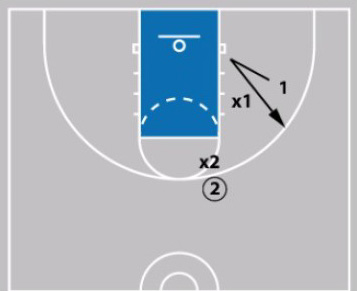
2. The second offensive player is on the wing. The drill starts with the offensive player taking the defensive player down to the basket replicating the situation above. Play is live.
The offense can only use one side of the court. You split time between the left side and right side of the court.
Like above, you can do shot clocks, dribble limitations, offensive rules, and time limits to get open.
For this situation, you can also do passing limits. That way, players learn how to immediately attack a situation.
You can also do something similar with 3v3, 4v4, and 5v5 where the player with the ball has to pass to initiate the offense.
Resources:
This video clip is from Don Kelbick's Attack & Counter Skill Development System. This is a great resource for individual skill development.
For team-oriented offense development, you can look at Don Kelbick's Motion Offense Videos.
What do you think? Let us know by leaving your comments, suggestions, and questions...
|
||||||||



 Facebook (76k Likes)
Facebook (76k Likes) YouTube (85k Subscribers)
YouTube (85k Subscribers) Twitter (26k Followers)
Twitter (26k Followers) Q&A Forum
Q&A Forum Podcasts
Podcasts